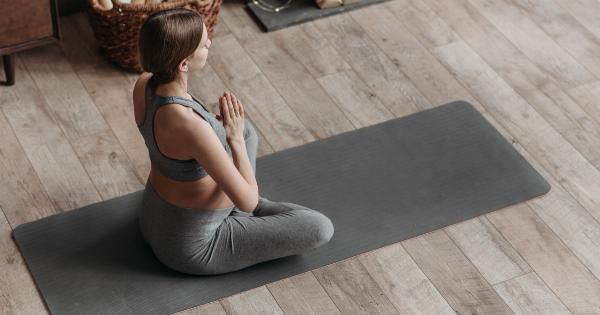Gymnastics is a popular and challenging form of exercise that requires strength, flexibility, and coordination. Many women who regularly participate in gymnastics wonder whether it is safe to continue practicing during pregnancy.
With the right precautions and modifications, it is possible to enjoy the benefits of gymnastics while ensuring the safety of both the mother and the baby. In this article, we will discuss some important tips for safely practicing gymnastics during pregnancy and how to optimize the benefits of this form of exercise.
Consulting with your healthcare provider
Before engaging in any physical activity during pregnancy, it is crucial to consult with your healthcare provider. Your healthcare provider will assess your individual health and pregnancy condition to determine whether gymnastics is suitable for you.
They will also guide you on any necessary modifications and limitations based on your specific situation.
Is gymnastics safe during pregnancy?
Gymnastics, when done with caution and under guidance, can be safe during pregnancy. However, it is important to remember that each pregnancy is different, and what may be safe for one woman may not be safe for another.
The safety of practicing gymnastics during pregnancy largely depends on your overall health, the stage of pregnancy, and any potential complications.
Benefits of gymnastics during pregnancy
Gymnastics offers several benefits for pregnant women, including:.
- Maintaining overall fitness: Regular gymnastics practice can help you maintain cardiovascular fitness, muscle strength, and flexibility throughout pregnancy.
- Improved posture and stability: Gymnastics exercises can help strengthen your core muscles, leading to improved posture and stability, which is especially important as your body undergoes significant changes.
- Reduced discomfort: Certain gymnastics stretches and exercises can help alleviate common discomforts of pregnancy, such as back pain and muscle tension.
- Stress relief: Engaging in physical activity releases endorphins, which can help improve your mood and reduce stress levels during pregnancy.
Important tips for practicing gymnastics during pregnancy
1. Warm up properly
Before any gymnastics session, it is essential to warm up your muscles adequately. This will help prevent injury and prepare your body for the physical demands of gymnastics.
Start with gentle exercises, such as walking or light stretching, to get your blood flowing and increase your body temperature.
2. Avoid high-impact activities
During pregnancy, it is advisable to avoid high-impact activities that may put excessive stress on your joints and ligaments. Skip activities like trampoline jumps and flips.
Instead, focus on low-impact exercises that still provide a workout, such as modified floor exercises and balance work.
3. Modify your routine as your pregnancy progresses
As your body changes throughout pregnancy, you will need to modify your gymnastics routine accordingly. Take into consideration your growing belly, changes in balance, and increased joint looseness.
Avoid exercises that put pressure on your abdomen and be mindful of your center of gravity.
4. Stay hydrated
Proper hydration is essential during pregnancy, especially when engaging in physical activity. Drink plenty of water before, during, and after your gymnastics workouts to prevent dehydration.
Dehydration can lead to dizziness, fatigue, and increased Braxton Hicks contractions.
5. Listen to your body
Pay close attention to your body’s cues while practicing gymnastics. If something feels uncomfortable, painful, or causes shortness of breath, stop immediately.
It’s important to prioritize your safety and the well-being of your baby over pushing yourself too hard.
6. Use proper equipment and attire
Ensure that you have suitable equipment and attire for your gymnastics practice during pregnancy. Wear comfortable, supportive clothing and invest in appropriate shoes to provide stability and minimize the risk of falls or injuries.
If using apparatus, such as balance beams or bars, ensure they are stable and well-maintained.
7. Practice pelvic floor exercises
Pregnancy can weaken the pelvic floor muscles, leading to issues such as incontinence. Include regular pelvic floor exercises in your gymnastics routine to help strengthen these muscles.
Kegel exercises, for instance, can be done discreetly and effectively throughout the day.
8. Avoid overheating
Pregnant bodies are more prone to overheating, so it is crucial to avoid excessive heat during gymnastics. Choose well-ventilated areas for your workouts and regulate the intensity of your exercises to prevent overheating.
Take breaks when needed and listen to your body’s signals.
9. Consider prenatal gymnastics classes
Prenatal gymnastics classes specifically designed for pregnant women can provide a safe and supportive environment to practice gymnastics.
These classes are tailored to accommodate the physiological changes of pregnancy and are led by instructors experienced in working with pregnant women.
10. Post-workout cool down
After your gymnastics workouts, take the time to cool down and stretch your muscles gently. This will help prevent muscle soreness and promote flexibility. It also allows your heart rate and breathing to gradually return to normal.
Conclusion
Gymnastics can be a safe and beneficial form of exercise during pregnancy when practiced with caution and under the guidance of your healthcare provider.
By following these tips and listening to your body, you can enjoy the physical and mental benefits of gymnastics while ensuring the safety and well-being of both you and your baby. Remember, every pregnancy is unique, so consult your healthcare provider before starting or continuing any exercise routine.

























